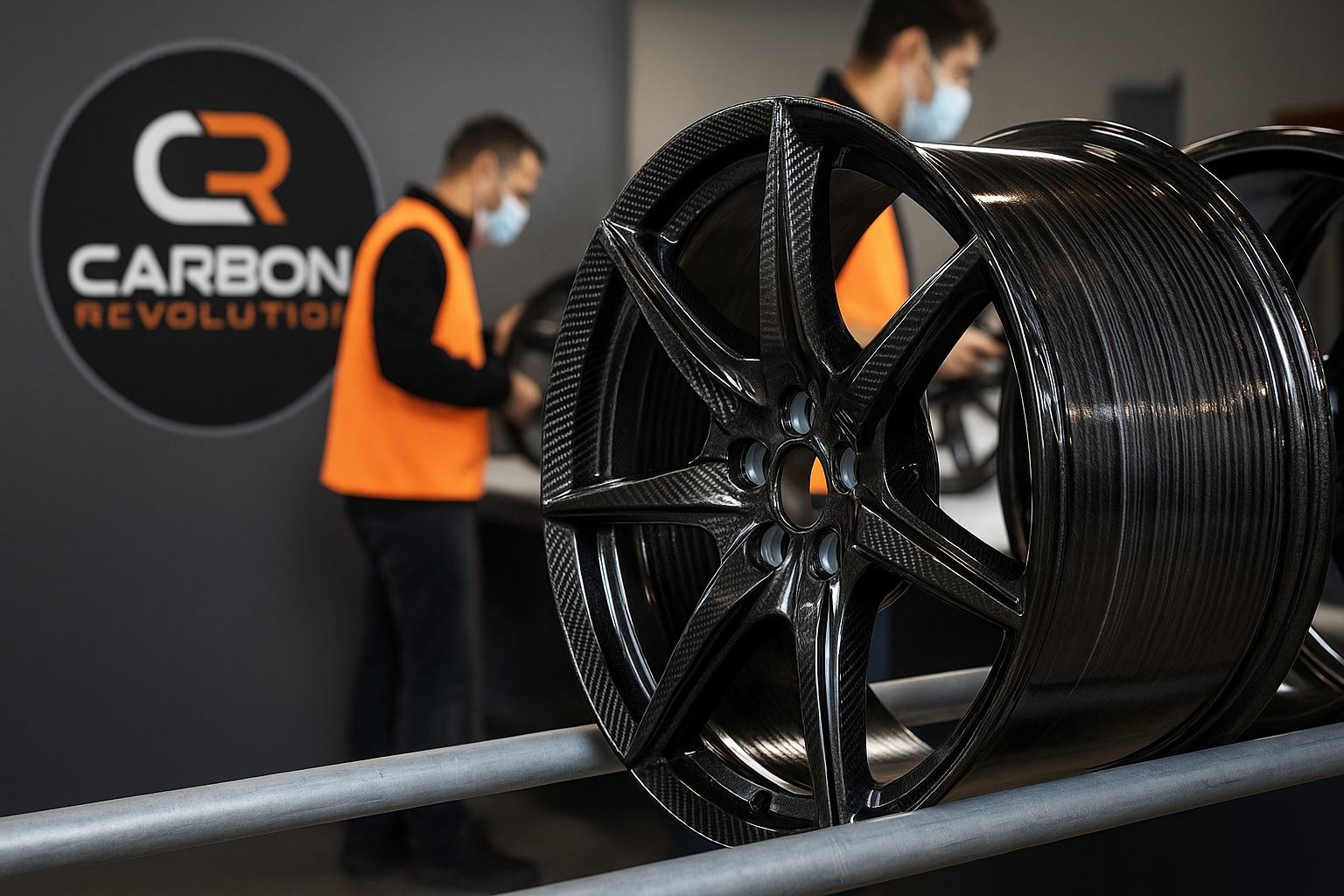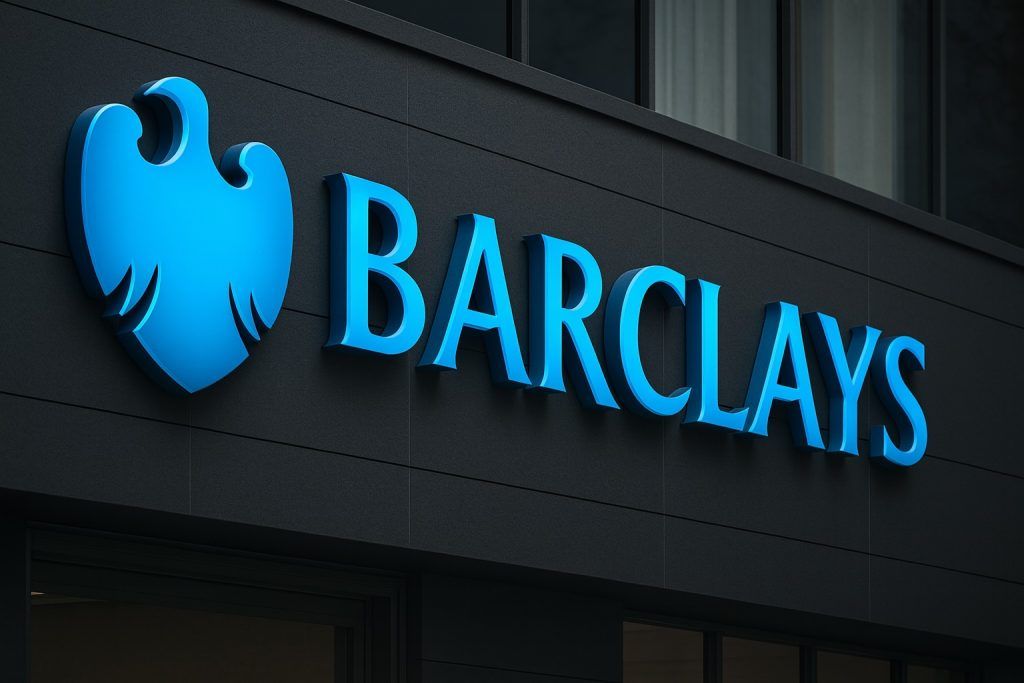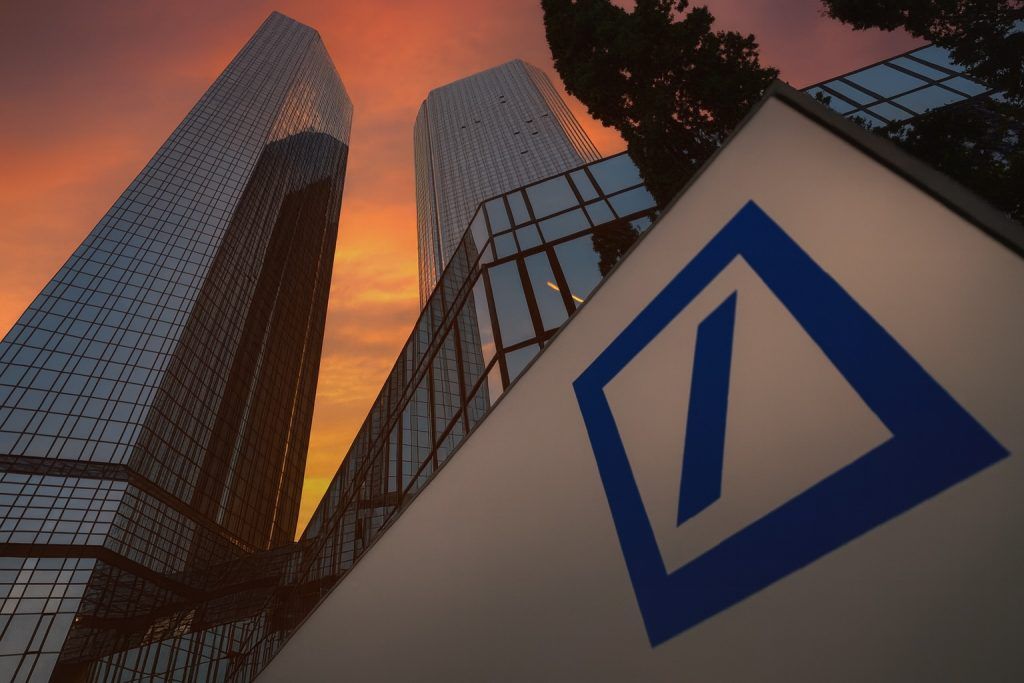- Nasdaq listing in jeopardy: Carbon Revolution has received compliance warnings from Nasdaq for failing to meet a $10 million stockholders’ equity requirement [1] and for missing a required financial filing deadline [2] [3]. The company has deadlines in late 2025 to rectify these issues or risk delisting.
- Micro-cap stock plunge:CREV trades around $3.73 as of Oct. 17, 2025 [4], giving the EV wheel maker a market cap under $7 million [5]. Shares have lost roughly half their value year-to-date and sit over 70% below the 52-week high of $14.19 [6], reflecting intense market skepticism despite recent bounces.
- Record sales, big losses: In fiscal 2024 (year ended June 30, 2024), Carbon Revolution’s revenue hit a record US$47.3 million (up 87% year-over-year) [7]. However, heavy spending drove a net loss of US$146.4 million [8], indicating the startup’s challenge in turning rapid growth into profitability.
- Funding squeeze: The company recently completed a $25 million debt facility from Orion Infrastructure Capital, taking a final $5M tranche in July [9] and even issuing penny warrants (~5% of shares) to lenders [10]. Carbon Revolution simultaneously slashed its revenue forecasts due to declining wheel orders and warned it will need additional funding within the next quarter to stay liquid [11].
- EV wheel pioneer: Carbon Revolution is a leading maker of one-piece carbon fiber wheels that are 40–50% lighter than aluminum wheels, improving vehicle efficiency. Automakers from Jaguar Land Rover to Chevrolet and Hyundai are adopting carbon-fiber wheels to reduce rolling inertia and boost performance [12]. The weight savings can enhance electric vehicle range (industry experts estimate on the order of 5–10% extra range) by cutting rotating mass and enabling more aerodynamic designs. As wheels grow larger on EV SUVs and trucks, the benefits become even more pronounced [13]. Carbon Revolution’s CEO notes that a new 24-inch EV pickup truck wheel in development will be ~45–50% lighter than the same-size alloy wheel [14] – roughly the weight of an 18-inch aluminum wheel – yet strong enough for a heavy electric truck [15].
- Analysts and market outlook: With its tiny valuation (~0.2× trailing sales [16]) and high cash burn, CREV is viewed cautiously by market observers. Technical analysis platforms have flashed bearish signals, with one algorithmic service recently downgrading CREV to a “Strong Sell” rating due to persistent downtrend indicators [17]. Notably, an earlier analyst consensus (from the company’s SPAC listing era) pegged CREV’s target price around $40 – an 800%+ upside [18] – underscoring the once-lofty expectations for Carbon Revolution’s potential. So far, that optimism hasn’t been realized, and no major Wall Street firm has issued updated coverage, leaving investors to weigh the company’s promise versus its peril.
Nasdaq Compliance Deadlines Loom
Carbon Revolution is under intense pressure to shore up its Nasdaq listing status. On July 16, the Australia-based company disclosed it had received a non-compliance notice for falling short of Nasdaq’s minimum shareholder equity requirement of $10 million [19]. The deficiency was evident in its FY2024 financials, and Nasdaq gave Carbon Revolution 45 days to submit a plan to regain compliance [20]. If that plan is accepted, the company could get up to 180 days (until ~Nov. 26, 2025) to rebuild its equity base or otherwise meet listing standards [21]. Failure to do so would put Carbon Revolution at risk of delisting from the Nasdaq Global Market.
Importantly, this equity notice does not immediately halt trading of CREV shares [22]. Carbon Revolution has been exploring remedies – potentially raising new equity or converting debt – to boost its stockholders’ equity above the $10M threshold. The company can also appeal to a Nasdaq hearings panel if its compliance plan is rejected [23], which would buy additional time. However, given the firm’s small market cap and ongoing losses, meeting the equity cutoff likely hinges on fresh capital injections or balance sheet restructurings in the coming months.
The equity shortfall isn’t the only listing challenge. Nasdaq also notified Carbon Revolution in mid-2025 that it had failed to file timely financial statements for the half-year period ended Dec 31, 2024 [24]. As a foreign private issuer, Carbon Revolution is required under Listing Rule 5250(c)(2) to submit interim financials on Form 6-K. The company missed that deadline, triggering a separate warning. Nasdaq afforded 60 days to submit a compliance plan for the filing issue, with a possible extension to late December 2025 to get all reports up to date [25]. In a statement, Carbon Revolution said the notice had “no immediate effect” on its Nasdaq listing and that it was working diligently to file its Annual Report on Form 20-F and any overdue 6-Ks [26]. Management insists these compliance problems are being addressed, but the twin Nasdaq warnings underscore the firm’s precarious position as of Q4 2025.
CREV Stock: Volatile Micro-Cap on a Downhill Track
On the market, Carbon Revolution’s stock has been on a rollercoaster – albeit one mostly descending in recent months. CREV closed at $3.73 on October 16, 2025 [27], and was trading around $3.725 by mid-day Oct. 17 [28]. At this price, the entire company’s market capitalization is roughly $7 million [29], classifying it as a micro-cap stock. For context, Carbon Revolution had merged into a U.S.-listed entity less than two years ago via a SPAC, initially valuing the business at several hundred million dollars. Since then, shares have eroded dramatically – now changing hands for mere dollars.
Year-to-date, CREV has slid about 50% in value (it was around $7–8 per share in January). It remains over 70% below its 52-week high of $12.75 [30]. In fact, the stock hit a 52-week low of $2.00 at one point [31], indicating extreme swings. There have been brief rallies – for example, at one stage this summer CREV notched a 10% gain in a single week [32], and on heavy trading days the stock has popped on speculation. But those upticks have been fleeting against a backdrop of steady declines. As of mid-July, the stock was around $4.93 and already down 35% for 2025 [33]; it has since fallen further. Low trading volumes and limited analyst coverage contribute to outsized volatility, as even small orders can move the price.
Technical indicators paint a cautious picture. The stock’s short-term trend is downward, and it has fallen in six of the last ten trading days [34]. According to StockInvest.us, sell signals from moving averages and momentum indicators abound, and the stock sits in the middle of a “very wide and falling” price channel [35] [36]. The platform recently downgraded its view on CREV from Sell to “Strong Sell”, citing the persistently negative chart pattern [37]. While technical analysis is just one lens, it reflects bearish sentiment dominating CREV at present. The one bright spot technically is that trading volume has been low on recent declines – a possible sign that selling pressure could be exhausting [38] [39]. Still, until there’s concrete good news, downside risk remains high. Short-term traders have been warned that Carbon Revolution’s stock “will still perform weakly in the next couple of weeks” barring a trend change [40].
It’s worth noting that because of the small float and intense swings, CREV has shown moments of eye-popping movement. For instance, on May 15, 2025, the stock jumped over 14% intraday amid chatter about a “significant breakthrough in production technology” [41]. That spike coincided with the company’s U.S. earnings debut and perhaps some optimistic trading headlines. But even on that volatile day, CREV ultimately closed down from its open, illustrating how speculative surges have failed to hold. Investors remain deeply divided – some are clearly betting on a turnaround given the low price, while others are cutting losses. The result is a see-saw of sudden gains and steep drops as news trickles out.
Analysts: Few Takers, Lofty Old Targets vs. Stark Reality
Traditional Wall Street analyst coverage of Carbon Revolution is virtually nonexistent at this stage. No major investment banks or research firms have published target prices or formal ratings on CREV in recent months [42]. The dearth of coverage is typical for a micro-cap stock, especially one that arrived via SPAC and has struggled to meet projections. In the absence of fresh analyst opinions, the investing public has had to rely on company disclosures, independent bloggers, and algorithmic analyses for insight.
Interestingly, some lingering analyst forecasts from the SPAC merger period paint a wildly more optimistic picture. According to ChartMill and Fintel data, a group of about 7 analysts (likely those involved around the 2023 de-SPAC process) had an average 12-month price target of approximately $39.78 for CREV [43]. That figure implies an almost 8- to 10-fold increase from current levels – a +800% or higher upside. In fact, one source notes this target is about 840% above the recent trading price [44]. Of course, such projections were based on growth plans and market conditions that preceded Carbon Revolution’s public listing and financial hurdles. They assumed the company would rapidly scale its revenues and improve margins with new production lines, potentially justifying a valuation in the hundreds of millions. Today, with the stock under $4, those bullish targets appear extremely far-fetched. They serve mainly to highlight the gap between initial expectations and present reality.
Market commentators who do follow Carbon Revolution are striking a more sober tone. Simply put, the company’s execution hasn’t yet lived up to the hype. “CREV may be in some trouble as it scores bad on both profitability and health,” ChartMill’s fundamental analysis notes, giving the firm a low 1/10 fundamental rating among auto parts peers [45]. The balance sheet is strained – current ratio and quick ratio are near 0, indicating very tight working capital [46] [47]. On the plus side, Carbon Revolution carries minimal traditional debt (much of its funding is in the form of convertible notes or facilities) [48]. But that’s because it finances operations through equity and alternative instruments, which have their own costs.
Financially, valuations look superficially enticing. With ~$47M in annual sales and a ~$7M market cap, CREV’s price-to-sales ratio is around 0.15 – a fraction of the auto supplier industry average near 1.0 [49] [50]. In theory this could signal a bargain if the company can survive and grow. “Value-seeking investors” might notice such metrics [51]. However, the low multiple also reflects the market’s grave concerns about Carbon Revolution’s ability to continue as a going concern without massive dilution or a turnaround. As one analyst quipped, cheap can always get cheaper – especially if a company might run out of cash.
At least one equities commentator sees a glimmer of hope: InvestingPro data recently highlighted that despite trading at a fraction of its former value, Carbon Revolution’s stock had positive momentum over a short span, returning about 10% in one week [52] (likely on news of new funding). Yet even that analysis immediately tempered the optimism, noting CREV remains “significantly below” its highs and urging investors to monitor how the company addresses its compliance and cash challenges [53] [54]. Overall, the sentiment among those who are watching is cautious, awaiting clearer signs of stability. Until Carbon Revolution proves it can secure its financial footing and execute on its contracts, most analysts and experts are advising extreme caution.
Balancing Act: Record Growth vs. Cash Burn
Lost in the market angst is the fact that Carbon Revolution’s core business is actually growing briskly – and it continues to hit technical milestones in its field. The company’s latest earnings release (for fiscal year 2024) reported all-time high revenues of US$47.3 million, an impressive +87% increase over the prior year [55]. This growth was driven by fulfillment of several OEM wheel programs ramping up. Carbon Revolution has now supplied over 60,000 carbon fiber wheels to the market [56], including for models like the Ford Mustang Shelby GT350R, Ferrari SF90 Stradale, and Chevrolet Corvette Z06. Newer high-performance SUVs are also joining the roster: notably, Jaguar Land Rover’s Range Rover Sport SV now offers 23-inch Carbon Revolution wheels as an option [57], after initial success on a limited edition Range Rover model. Each new program contributes to revenue, and the pipeline of future models (some of them electric vehicles) suggests potential for continued top-line growth.
However, that growth has come at a steep cost. Carbon Revolution remains deeply unprofitable, as it pours money into manufacturing capacity, R&D, and the overhead of being a newly public company. The FY2024 net loss swelled to $146.4 million [58] – nearly three times the previous year’s loss. Even excluding one-time items, the cash burn far outstripped gross profit from wheel sales. Notably, the company took a hefty $68.0 million impairment charge in FY2024 [59], likely writing down the value of some equipment or development costs, which underscores the financial strain. Without that non-cash charge, the loss would still be around $78 million, reflecting ongoing negative margins.
Management has been candid that scaling up production is essential to eventually reach profitability. Carbon Revolution has been commissioning its so-called “Mega-line” – a highly automated production line intended to dramatically increase output and lower per-wheel costs. According to the company, this new line can churn out larger diameter wheels (23- and 24-inch) suitable for heavy EVs and trucks, using advanced processes like its Diamond Weave carbon layup technology [60]. The first Mega-line is now operational in the company’s Australian facility [61]. As it ramps up, Carbon Revolution expects manufacturing efficiency to improve. In theory, higher volume and automation should reduce unit costs and help the company move toward breakeven on each wheel sold. The firm has also been eyeing a potential North American factory to be closer to U.S. automakers, although with the current capital crunch those plans may be on hold [62].
To finance its growth and bridge the losses, Carbon Revolution has leaned on creative funding sources. In late 2024, it secured a $60M loan facility from PIUS and a $25M revolving facility from Orion Infrastructure Capital – lifelines that provided cash through the SPAC transition and into 2025 [63]. By July 2025, the company drew the final $5.0 million from the OIC facility and got OIC’s sign-off to release an extra $400,000 that had been held in reserve [64]. This marked the full disbursement of those loans, implying the company has effectively maxed out its existing credit lines. As part of the July funding, Carbon Revolution had to sweeten the deal for lenders by issuing “penny warrants” (ultra-low-price warrants) equivalent to about 5% of its outstanding shares [65]. In other words, creditors received equity upside in exchange for the risk they took. Such measures, while necessary, dilute existing shareholders – adding to the roughly 1.9 million ordinary shares already out.
Crucially, the July update came with a warning: Carbon Revolution’s management revised its internal forecasts downward due to a decline in wheel orders from automotive customers and some delays in customer payments [66]. The company admitted it will need additional funding by the end of the next quarter (i.e. by Q4 2025) to maintain operations at the current pace [67]. This was a stark acknowledgement that despite completing the OIC and PIUS funding programs, the cash burn continues to outrun inflows. Since that announcement, there’s been no public word of new financing deals. Analysts speculate that Carbon Revolution may attempt to raise equity (despite the low share price), seek strategic partners, or even scale back its expansion plans to conserve cash. The outcome on this front will likely determine the company’s fate – and by extension, the fate of its Nasdaq listing and shareholders.
EV Market Opportunities – and Challenges
One reason investors haven’t completely given up on Carbon Revolution is the company’s unique position in the electric vehicle supply chain. As automakers race to improve EV performance and driving range, lightweight components have become increasingly valuable. Wheels are a prime target: conventional aluminum wheels are heavy (especially as diameters increase for style and stability), and that weight is unsprung and rotating, which negatively affects efficiency. Carbon fiber wheels address this pain point. They can be 45%–50% lighter than equivalent aluminum rims while maintaining strength and rigidity [68] [69]. Less weight means less energy required to spin the wheels and to overcome inertia when accelerating or braking. By some industry estimates, swapping to carbon fiber wheels can yield a 5–8% improvement in EV range due to reduced rolling resistance and mass [70] [71]. That’s a significant gain for electric cars where every mile of range counts.
Carbon Revolution has been evangelizing these benefits and appears to be gaining traction with major OEMs. The company describes itself as a Tier-1 supplier to leading marques in the performance car realm [72], and it is now leveraging those relationships to enter the EV and luxury SUV segments. A recent showcase example is the Range Rover Sport SV mentioned earlier: Jaguar Land Rover chose Carbon Revolution to supply ultra-large 23-inch carbon wheels for its flagship performance SUV, partly to offset the hefty weight of the vehicle [73] [74]. The carbon wheels shave off 76 kg (168 lbs) compared to standard wheels [75], enabling quicker acceleration (0–60 mph in 3.6 seconds, astonishing for a Range Rover) and better handling. JLR’s project validates that carbon wheels can handle the loads of a large SUV. It also signals confidence in Carbon Revolution’s product quality and capacity, since these wheels will be offered to paying customers in a production model.
Other automakers are moving in this direction too. General Motors has used Carbon Revolution wheels on the track-focused Corvette Z06 and Cadillac CT5-V Blackwing models. Ford was an early adopter, equipping the Mustang GT350R and GT500 with the company’s wheels to save ~60 lbs unsprung weight. Ferrari, Lamborghini, and Lotus have all tested or offered carbon wheels on select models (Ferrari’s SF90 hybrid supercar, for example, has Carbon Revolution wheels as an option). Now, the EV market beckons. Carbon Revolution’s engineering team has revealed they are well advanced on a 24-inch wheel program for a future electric pickup truck [76] – likely for an American OEM. “The 24-inch EV pickup wheel will weigh the same as an 18-inch alloy wheel, yet it will be strong enough to withstand the vehicle’s high load requirements,” said Carbon Revolution’s engineering manager Brett Denmead [77]. This combination of lightness and strength could help electrify heavy-duty trucks (which typically struggle with range due to weight). It also caters to consumer preferences: pickup buyers often like large rims for aesthetics, and carbon fiber allows that without the usual weight penalty [78].
Aside from weight reduction, carbon wheels offer design and noise advantages that appeal to EV designers. Because carbon fiber can be molded into complex aerodynamic shapes without adding much mass, wheels can be made with covered or intricate designs that reduce drag, which further improves range [79] [80]. This is harder to do with metal wheels, which become excessively heavy if made solid or with extra material for aero purposes. Additionally, carbon fiber’s vibration-damping properties can lead to a quieter ride – an important factor in EVs where the lack of engine noise makes road noise more noticeable. Carbon Revolution often touts that its wheels reduce cabin noise and brake shudder, enhancing refinement.
The big question is whether these advantages can translate to commercial success at scale. Carbon fiber wheels are still very expensive to produce compared to cast or forged aluminum wheels. They have so far been used mostly on high-end, low-volume models where cost is less of an object. Carbon Revolution’s strategy, and indeed its public-market pitch, is that through automation (the Mega-line) and volume, it can dramatically cut costs and eventually penetrate mid-range cars as a premium option – especially EVs looking to maximize range. If it can pull this off, the total addressable market would expand significantly (tens of millions of vehicles). The company claims its newest processes are making progress: MotorTrend reported that Carbon Revolution’s manufacturing advances have nearly brought certain carbon wheels “in line” with cheaper methods [81] [82] in terms of viability for mass production, though there is still a gap.
There are also competitive and practical hurdles. Some analysts wonder if larger automakers will eventually develop in-house carbon wheel programs or turn to alternative materials (like metal matrix composites or advanced alloys) to achieve similar weight savings [83] [84]. For now, Carbon Revolution has a first-mover advantage and a growing patent portfolio around one-piece carbon wheel tech. This has led to partnerships – for instance, the company had a technical alliance with Ford in the past and more recently with General Motors’ defense arm (for military vehicles where weight is crucial). No major competitor has yet matched Carbon Revolution’s track record in this niche, giving it a valuable window to entrench itself as the go-to supplier for carbon wheels.
Outlook: At a Crossroads of Innovation and Survival
As of October 2025, Carbon Revolution stands at a pivotal juncture. On one hand, the company is an innovator with real traction: it has world-leading technology, growing adoption in a segment of the auto industry that is poised to expand (electric and high-performance vehicles), and a demonstrated ability to multiply its sales when programs ramp up. Its product addresses clear needs – EV range and vehicle performance – which suggests a potentially sustainable demand if costs can be managed. The long-term secular trends (EV proliferation, lightweighting for efficiency) play to Carbon Revolution’s favor.
On the other hand, the near-term challenges are severe. The company’s finances are, by its own admission, stretched to the limit. It must raise additional capital within months to avoid disruption, all while its stock price is languishing at micro-cap levels that make equity dilution especially painful. The Nasdaq compliance clock is ticking: failure to boost equity or file reports in time could see CREV kicked off the exchange, which would further erode investor confidence and access to capital. Simply put, Carbon Revolution is burning cash at a rate that private funding or current revenues cannot sustain. Unless it secures a lifeline – be it a strategic investment, merger, or significant new financing – the company could run out of road. In an industry where credibility and staying power matter to win OEM contracts (which often have long lead times), any whiff of financial distress can also hurt business prospects.
Investors and analysts will be watching several key developments in the coming weeks and months:
- Financing or Partnership Announcements: Any news of a capital raise, debt restructuring, or a partnership with a larger industry player could be a game-changer. For example, a strategic partnership with an OEM or major supplier (perhaps exchanging equity for cash and contracts) might solve the immediate cash crunch and validate the technology. Absent that, even a modest rights offering or private placement – while dilutive – could extend Carbon Revolution’s runway and be taken as a positive if it removes bankruptcy fears. The company’s ability to negotiate funding on reasonable terms will be critical.
- Upcoming Earnings and Guidance: Carbon Revolution is expected to report interim financial results again by December 2025 (its next earnings date is tentatively Dec 3, 2025 [85]). In that report, investors will look for updates on wheel order volumes, any additional OEM program wins, and the status of cost reduction efforts. If the company can show that it is cutting its cash burn or that revenue is on track despite earlier forecast downgrades, it might rebuild some confidence. Conversely, any indication of further delays or customer pullbacks would be detrimental.
- Nasdaq Compliance Updates: By late November, we should know if Nasdaq accepted Carbon Revolution’s equity compliance plan – likely determining whether the stock gets an extension to trade through early 2026. Similarly, progress on filing the delayed financial statements will be closely monitored. The avoidance of a forced delisting is almost a prerequisite for any recovery in the stock, as being relegated to OTC markets could dry up liquidity and institutional interest.
- Market Conditions in EV/Tech: Broader market sentiment towards EV-related tech companies will also influence CREV. After a high-flying 2021–2022, many EV suppliers and SPAC startups have seen their valuations collapse in 2023–2024. If there’s a sector turnaround or renewed investor appetite for speculative cleantech plays, Carbon Revolution could benefit from a halo effect. For instance, any breakout success of EV models featuring carbon wheels (like the Range Rover SV or future GM EVs) could generate buzz and inbound interest in CREV. The company’s story fits the narrative of “picks-and-shovels” play on the EV boom – but it needs that narrative to overcome the current focus on its balance sheet troubles.
In summary, Carbon Revolution’s story is a mix of high-tech promise and financial peril. As a pioneer in carbon fiber wheel technology, the company has achieved feats that could significantly impact next-generation electric and luxury vehicles – from improving range and ride quality to enabling bold new designs. It has proven demand at the top end of the market and is pushing into broader segments. These are the accomplishments its supporters point to, arguing that the stock’s deep decline is overdone if one believes the company can ultimately stabilize and flourish in the EV era. “The main strength is the ability to pivot innovations towards a market need,” one optimistic analysis noted [86], suggesting that Carbon Revolution’s focus on EVs and efficiency could yet pay off.
Yet, the risks are impossible to ignore. The company is effectively in a race – to scale up and cut costs before its cash runs out or shareholder dilution becomes too extreme. Execution hiccups have already occurred (delayed filings, lower-than-expected wheel orders), and the margin for error is now very slim. In the coming months, investors will be looking for any indication that Carbon Revolution can navigate this minefield – whether through a financial reprieve or operational breakthroughs – to keep its wheels on the road. For now, caution reigns. The stock’s ongoing slump and the candid warnings from management about funding needs show that many are taking a “wait and see” approach. Carbon Revolution’s next moves – and the support it can muster – will determine if this ambitious EV supplier can steer out of trouble and regain the market’s confidence.
Sources: Carbon Revolution investor releases [87] [88] [89]; Nasdaq and Investing.com news reports [90] [91]; ChartMill and StockInvest.us analyses [92] [93]; MotorTrend and industry media on carbon fiber wheels [94] [95]; Yahoo Finance/Investing.com market data [96] [97]; Company fiscal 2024 results (GlobeNewswire) [98].
References
1. www.stocktitan.net, 2. www.investing.com, 3. www.investing.com, 4. www.investing.com, 5. www.investing.com, 6. www.investing.com, 7. www.chartmill.com, 8. www.chartmill.com, 9. www.stocktitan.net, 10. www.stocktitan.net, 11. www.stocktitan.net, 12. www.plasticstoday.com, 13. www.plasticstoday.com, 14. www.motortrend.com, 15. www.motortrend.com, 16. stockstotrade.com, 17. stockinvest.us, 18. www.chartmill.com, 19. www.stocktitan.net, 20. www.stocktitan.net, 21. www.stocktitan.net, 22. www.stocktitan.net, 23. www.stocktitan.net, 24. www.investing.com, 25. www.investing.com, 26. www.investing.com, 27. stockinvest.us, 28. www.investing.com, 29. www.investing.com, 30. www.investing.com, 31. www.investing.com, 32. www.investing.com, 33. www.investing.com, 34. stockinvest.us, 35. stockinvest.us, 36. stockinvest.us, 37. stockinvest.us, 38. stockinvest.us, 39. stockinvest.us, 40. stockinvest.us, 41. stockstotrade.com, 42. stockanalysis.com, 43. www.chartmill.com, 44. www.chartmill.com, 45. www.chartmill.com, 46. www.chartmill.com, 47. www.chartmill.com, 48. www.chartmill.com, 49. stockstotrade.com, 50. www.chartmill.com, 51. stockstotrade.com, 52. www.investing.com, 53. www.investing.com, 54. www.investing.com, 55. www.chartmill.com, 56. www.carbonrev.com, 57. www.plasticstoday.com, 58. www.chartmill.com, 59. www.chartmill.com, 60. www.plasticstoday.com, 61. www.plasticstoday.com, 62. stockstotrade.com, 63. www.stocktitan.net, 64. www.stocktitan.net, 65. www.stocktitan.net, 66. www.stocktitan.net, 67. www.stocktitan.net, 68. www.motortrend.com, 69. www.motortrend.com, 70. www.plasticstoday.com, 71. www.plasticstoday.com, 72. marketwirenews.com, 73. www.plasticstoday.com, 74. www.plasticstoday.com, 75. www.plasticstoday.com, 76. www.motortrend.com, 77. www.motortrend.com, 78. www.motortrend.com, 79. www.motortrend.com, 80. www.motortrend.com, 81. www.carbonrev.com, 82. www.carbonrev.com, 83. www.motortrend.com, 84. www.motortrend.com, 85. www.investing.com, 86. stockstotrade.com, 87. www.stocktitan.net, 88. www.stocktitan.net, 89. www.stocktitan.net, 90. www.investing.com, 91. www.investing.com, 92. stockinvest.us, 93. www.chartmill.com, 94. www.plasticstoday.com, 95. www.motortrend.com, 96. www.investing.com, 97. www.investing.com, 98. www.chartmill.com







